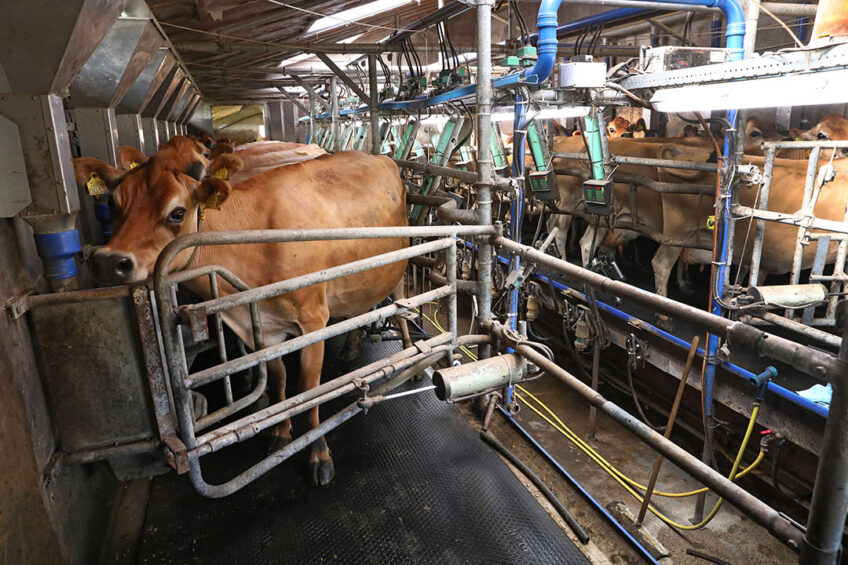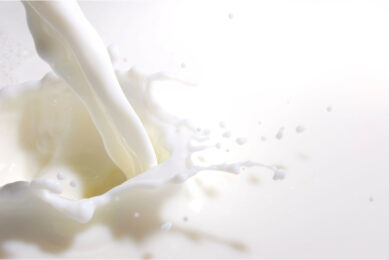How does dairy cow temperament affect milk production?

Dairy cow temperament is a multifaceted characteristic that comprises various behavioural aspects. Individual differences in dairy cow temperament impact production performance, including milk yield and quality.
The behaviour of dairy cows and its relationship with milk yield and quality are important topics for both consumers and producers because of their link to dairy cow welfare, production efficiency, and the sustainability of the dairy industry. However, due to the lack of standardisation regarding the measurement used in various research studies to assess the temperament of dairy cows, this is still a controversial topic.
Assessing dairy cow temperament
Temperament is defined as the individual variation in the animal’s behaviour due to their environmental circumstances, provided that those variations are consistent over time and in different situations. In dairy production systems, temperament can be evaluated by observing the behaviour of the cows in various situations.
Milking temperament can be assessed during routine handlings in the milking parlour and handling temperament can be evaluated through standardised tests such as flight speed, reactivity in the handling corral, and flight distance. Milking temperament is measured based on the cows’ reactivity during milking, considering the intensity of reactions to milking procedure, such as leg movements and kicks. In research studies, cows are classified as reactive, intermediate, and calm based on their temperament.
Effect of temperament on daily milk yield
In 2017, a study by Abdel-Hamid and colleagues showed that reactive cows spend more energy on motor activities including walking and standing. In addition, Marçal-Pedroza and colleagues (2021) determined that reactive cows in the milking parlour drop teat cups more often and direct less liquid energy to lactating, which results in a lower milk yield.
Although there are conflicting results regarding the impact of temperament on milk yield, Sawa and colleagues (2017) concluded that reactive cows are more aggressive during feeding and ingest greater amounts of food which leads to greater productive performance. Another study by Marçal-Pedroza and colleagues (2020) used rumination frequency during milking as a temperament measurement. The authors reported that cows with higher rumination frequency during milking were calmer and more relaxed, thus reaching greater milk yield than the ones who spent less time ruminating.
Parity is another factor impacting the milk yield of cows with different temperament. According to Marçal-Pedroza and colleagues (2020) primiparous cows in the high temperament category were the ones with the most rumination and higher milk yield. On the other hand, multiparous cows are more used to the milking process and show a smaller reaction to handling process, thus resulting in better productive performance for the calmer and for reactive ones compared to the intermediates.
When considering lactation stage, reactive cows had higher daily milk yield due to greater consumption followed by calm and intermediate cows that had the lowest milk yield. Although Gergovska and colleagues (2014) reported that despite the greater production, reactive cows had an irregular lactation curve.
Effect of temperament on total milk yield
In general, reactive cows were more productive over the whole lactation period than calm and intermediate ones. Moreover, among the primiparous cows, reactive cows yielded more than intermediate ones due to the relationship between greater feed intake and high milk yield in reactive animals.
Several studies by Sutherland and Dowling (2014), Hedlund and L¢vlie (2015), Cerqueira and colleagues (2017), Kruszyński and colleagues (2013), and Antanaitis and colleagues (2021) showed that calmer cows produce more milk with higher fat and protein contents. Meanwhile, Rousing and colleagues (2004) and Cziszter and colleagues (2016) determined that the reactive cows have higher milk yield, milk fat, and protein contents than the calm ones.
Conclusion
The relationship between temperament and milk yield depends on several factors, including the temperament indicators used, and dairy cow breed, age, and parity. There are conflicting results regarding the relationship between dairy cow temperament and milk yield, which leads us to further questions regarding the type of indicators used to classify animal temperament and the time to apply this classification.
In addition, there is a divergent interpretation of dairy cow temperament which may result in an inaccurate association between temperament type and productivity variables. Therefore, it is required to standardise protocols for behavioural assessments to better understand the results.
References can be provided upon request.
Join 13,000+ subscribers
Subscribe to our newsletter to stay updated about all the need-to-know content in the dairy sector, two times a week.










